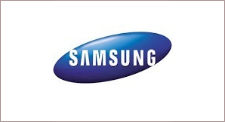
Samsung
Senior Manager – Radio Firmware Group (June 2011 – April 2014)
Samsung Electronics purchased the mobile connectivity business from CSR in October 2012. The purpose was to enhance Samsung Electronics ability to deliver complete solutions into the mobile business area, by providing in house WLAN, GPS, Bluetooth, and video connectivity technologies. (As part of the transfer, I was a nominated TUPE representative for the Software Group based in Cambridge)
(CSR is a global leader in wireless, and CSR’s Bluetooth, location, FM, Wi-Fi, audio, TV, video, and camera technologies are at the heart of many of the world’s most recognised electronics brands.)
Management of the Radio Firmware Group, which included the Bluetooth Radio Firmware Team and the Wi-Fi Radio Firmware Team, as part of Global Software. Provide the embedded firmware for the silicon chips that are used in various handsets/smart-phones, personal navigation and audio/visual devices. The primary output from the Radio Team was the control and management firmware for the analogue WLAN and Bluetooth radios.
Key Points
- Assisted in refining Agile processes and procedures for all aspects of Global Software.
- Line management of a team of professional embedded firmware engineers/group leaders.
- Line management and coordination of several contractors based locally and overseas.
- Responsible for the assignment of work and delivery of work to project milestones.
- Responsible for the technical direction of the teams.
- Manage the development and test of software work packages to an agreed timescale as defined by chip development programmes or internal IP development plans.
- Project management of the Radio firmware for the WLAN and Bluetooth subsystems.
- Manage the development and utilization of the development test infrastructure.
- Increase the quality, efficiency and productivity of radio firmware, ensuring a fast bring-up and eventual productisation of the radios.
- Responsible for budget, salary, recruitment, and resources of the Radio Firmware Group.
Although the role was initially as part of Cambridge Silicon Radio(CSR), the purchase by Samsung Electronics(SSEL) was a carve out of a complete business unit. This meant that my role was transferred across with no change in role or responsibility.
As part of the transfer of employment, I was also an elected employee representative for the Transfer of Undertakings (Protection of Employment) TUPE process.
In addition to line managing a multi-disciplinary team, the initial focus was to identify and assist in the improved quality and output of the Software Department. The Department included 3 Firmware teams, 2 Host Software teams (one located in Bangalore, India) and 2 WLAN System Test teams (one located in Bangalore). The track record of output was not optimal, and I was able to identify issue tracking, code branching and delivery process as being the key areas requiring considerable improvement.
The WLAN Radio Team included:
- Test; comprising 1 test infrastructure architect, 1 test developer, 1 test system administrator.
- Development; comprising 7 firmware engineers with a split of MAC/PHY and RF capability.
- Contractors; comprising applications and firmware capability based in Cambridge and New Zealand.
- Secondments; 2 firmware engineers working from our Denmark office, 1 engineer from Bluetooth.
Working closely with the Radio Systems and Integration Team and the Analogue Design Team (based in Sophia, France) the team supported, and implemented code through MATLAB conversion from the RF world into the WLAN firmware world. The role was a mix of Technical Authority and Project Manager for the Radio Firmware.
Later, this role expanded to Managing the newly created Radio Firmware Group. The Group included the management of two multi-disciplinary teams both focussed on radio technology; The Wi-Fi Radio Firmware and Bluetooth Radio Firmware teams. Whilst there was significant synergy between the teams and even the analogue components within silicon, these subsystems were very different technologies using different embedded environments, code bases and even development processes.
